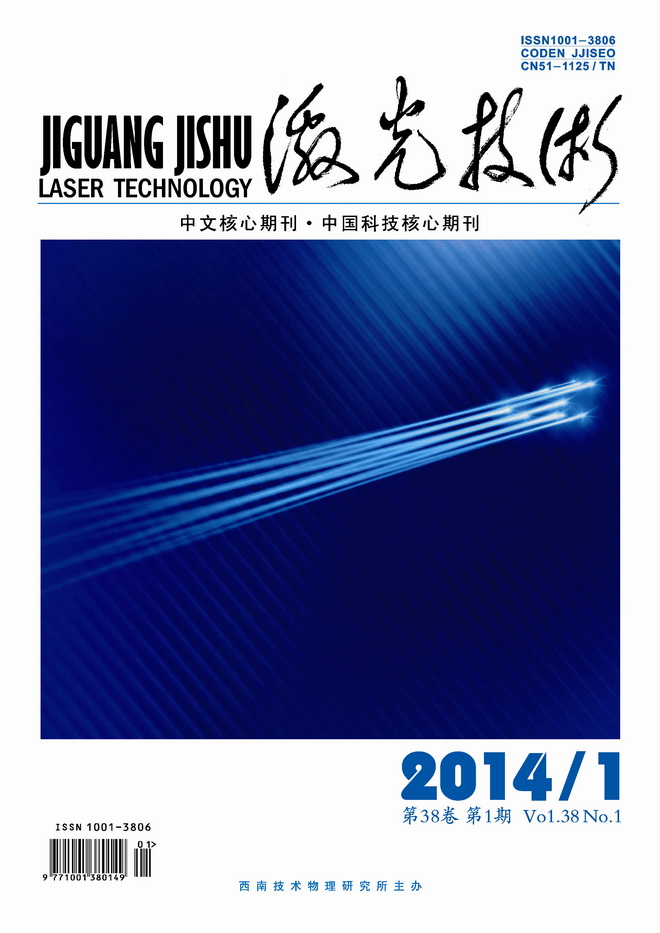Effect of thickness of metal hollow cylinders on laser thermo-elastic generated Rayleigh wave
-
1.
College of Electronic Engineering, Nangjing University of Posts and Telecommunications, Nanjing 210046, China
-
Corresponding author:
YAN Gang, yang@njupt.edu.cn
;
-
Received Date:
2013-02-01
Accepted Date:
2013-03-13
-
Abstract
To study the propagation of Rayleigh waves in a hollow cylinder, a finite element algorithm is put forward to simulate laser inducing Rayleigh waves in a hollow cylinder based on the thermoelastic mechanism. The Rayleigh waves induced by line laser source in hollow cylinders with different source-thickness and different radius were simulated and typical results were presented. Simulation results show that in the uniform thin hollow cylinder, the composition of ultrasonic waves is partly determined by the thickness of the hollow cylinder, and in a certain range, the ultrasonic waves are changing when the thickness of the hollow cylinder is changing; in the non-uniform hollow cylinder, the thickness of the source-thickness has a great influence on the generation of ultrasonic waves, and to some extent, it can determine the components of the waves. This work will provide a useful guidance for the further application of laser ultrasonic in the cylinder nondestructive testing field.
-

-
References
|
[1]
|
WU X, QIAN M, CANTRELL J H. Dispersive properties of cylindrical Rayleigh waves[J]. Applied Physics Letters, 2003, 83(19):4053-055. |
|
[2]
|
HU W, QIAN M, CANTRELL J H.Thermoelastic generation of cylindrical rayleigh waves and whispering gallery modes by pulsed-laser exeitation[J].Applied Physics Letters, 2004, 85(18):4031-4033. |
|
[3]
|
PAN Y, ROSSIGNOL C, AUDOIN B. Acoustic waves generated by a laser line pulse in a transversely isotropic cylinder[J].Applied Physics Letters, 2003, 82(24):4379-4381. |
|
[4]
|
FRANK S, BERND K, ALEXANDER P.Time domain modeling of axisymmetric wave propagation in isotropic elastic media with CEFIT-cylindrical elastodynamic finite integration technique[J].Journal of Computational Acoustics, 2001, 9(3):1127-1146. |
|
[5]
|
DONG L M, LI J, NI Ch Y, et al. Crack detection of engine blade based on laser-heating assisted surface acoustic waves generated by scanning laser[J].Chinese Journal of Lasers, 2011, 38(11):84-88(in Chinese). |
|
[6]
|
FENG W, YANG D X, LIAO W, et al. Numerical simulation of laser induced ultrasonic in a diamond anvil cell by finite element method[J]. Chinese Journal of Lasers, 2011, 38(8): 89-94(in Chinese). |
|
[7]
|
LIU J Sh, XU Zh H, GU G Q. Numerical study on improvement of signal-to-noise ratio of surface acoustic waves based on laser array[J]. Laser Technology, 2011, 35(3): 403-406(in Chinese). |
|
[8]
|
CAO D D, WANG K Sh, YANG Y Y. Fintite element simulation of temperature field of thin tubes irradiated by ring lasers[J].Laser Technology, 2010, 34(6):753-756(in Chinese). |
|
[9]
|
CLORENNEC D, ROYER D, CATEELINE S. Saw propagating on cylindrical parts using laser-ultrasonics: application to crack defection[J]. IEEE Ultrasonics Symposium, 2002, 1(8/11):207-210. |
|
[10]
|
ZHAO Y.Theoretical and experimental study of the laser-induced ultrasonic waves at fluid-solid interface and curved surface[D].Nanjing:Journal of Nanjing University of Science and Technology, 2007:3(in Chinese). |
|
[11]
|
HE Y J, ZHU R H, SHEN Zh H, et al. Simulation of laser-induced temperature fields and rayleigh waves in thick Al pipe[J].Journal of Nanjing University of Science and Technology, 2005, 29(4):468-471(in Chinese). |
|
[12]
|
GUAN J F.Mechanisms of laser generated surface acoustic wave and its application in the surface defect inspection[D]. Nanjing:Nanjing University of Science and Technology, 2006:3(in Chinese). |
|
[13]
|
WANG J J. Numerical simulationon laser ultrasoinc buried force source and ultrasound waveforms[D].Nanjing:Nanjing University of Science and Technology, 2008:3(in Chinese). |
-
-
Proportional views

-

 Map
Map



 DownLoad:
DownLoad: